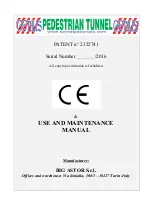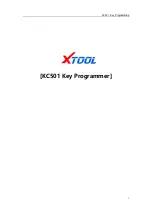
3
Controlling StudioLive RM-series Mixers
3.9
Internal Effects Mixes
StudioLive
™
CS18AI
Owner’s Manual
66
Reverb and its Parameters
Reverberation—or reverb, as it is more commonly known—is perhaps the most
widely used effect. Natural reverb is created by sound waves reflecting off of a
surface or many surfaces. For example, when you walk across the wooden stage
in a large hall, thousands of reflections are generated almost instantaneously
as the sound waves bounce off the floor, walls, and ceilings. These are known as
early reflections, and their pattern provides psychoacoustic indications of the
nature of the space that you are in. As each reflection is reflected off of more
surfaces, the complexity of the sound increases, while the reverb slowly decays.
The reason for the widespread use of reverb in audio recording is fairly self-evident:
Humans don’t live in a vacuum. Because our brains receive cues about the nature
of the space around us based partially on audio reflections, a sense of space
makes an audio recording sound more natural and, therefore, more pleasing.
Note:
Reverb types and presets can only be loaded on FX A and FX B.
The following parameters are available for the nine
reverb types the StudioLive offers:
Decay. Decay is the time (in seconds) required for the reflections (reverberation)
to die away. In most modern music production, reverb decay times of between
one and three seconds are prevalent. A reverb setting with strong early reflections
and a quick decay are a great way to create a stereo effect from a mono source.
Predelay. Predelay is the time (in milliseconds) between the end of the initial
sound and the moment when the first reflections become audible. Imagine you’re
back on that stage in a large music hall. This time you stand on the very edge of
the stage and shout “Hello world!” toward the center of the hall. There will be a
brief pause before you hear the first noticeable reflections of your voice because
the sound waves can travel much farther before encountering a surface and
bouncing back. (There are closer surfaces, of course—notably the floor and the
ceiling just in front of the stage—but only a small part of the direct sound will go
there, so those reflections will be much less noticeable.) Adjusting the predelay
parameter on a reverb allows you to change the apparent size of the room without
having to change the overall decay time. This will give your mix a little more
transparency by leaving some space between the original sound and its reverb.
Note: Predelay control is not available on every reverb type.
Early Reflections. Early reflections are those that reach the listener a few
milliseconds after the direct signal arrives. Your brain uses them to identify the size of
the room you’re in. If you are trying to simulate a specific type of room, this control
will be extremely important. This control allows you to set the level (in decibels) of
the early reflections. The louder the early reflections, the smaller the room will seem.
Note:
Early Reflections control is not available on every reverb type.
Содержание StudioLive CS18AI
Страница 4: ......
















































